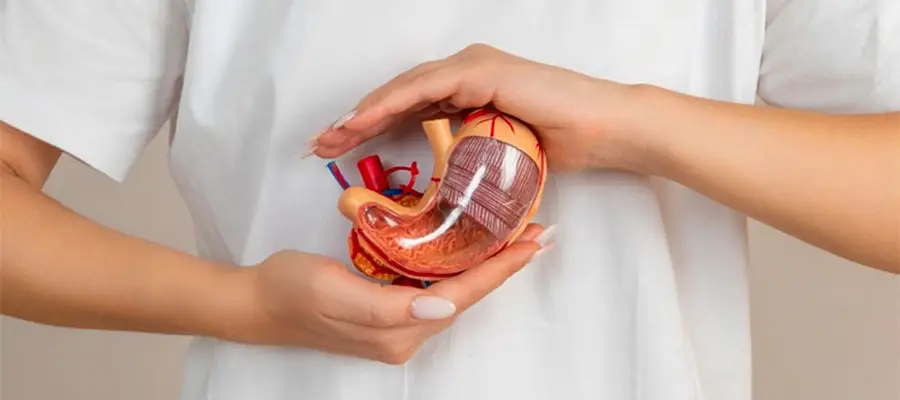
Roux-en-y- Gastric Bypass (RYGB) is the most commonly performed bariatric surgery method. However, the change in global trends shows that application of RYGB decreased down to 47% of all bariatric methods in 2011 which was 65% in 2003.
Description of RYGB – RYGB is sectioning a small poach (lesser than 30 mL) from lower part of the stomach and anastomosing it to small intestines which is 70-150 cm at length. New narrow valve between this stomach poach and intestines allows main digestion and absorption of nutrients in where food and gastric acid, pepsin, intrinsic factor, pancreatic enzymes and bill get mixed while restricting calorie intake.
Small intestine is sectioned from 30-50 cm afar the end of duodenum. By sectioning the intestines, the surgeon creates a new biliopancreatic organ that carries stomach discard and secretion of liver and pancreas. Digestion pathway is anastomosed to new stomach pouch and performs discharging the food consumed. Main digestion and absorption of nutrients is carried out in where food and pancreatic enzymes and bill get mixed.
Weight Loss Mechanism in RYGB – RYGB is restrictive regarding the stomach poach and it also contributes to weight loss considering malabsorptive mechanism. RYGB has been repetitively proven a better solution for long term weight loss than completely restrictive methods like vertical band gastroplasty (VBG). Genitourinary syndrome, digestion and digestion hormones mechanism in gastric bypass may have a role in below;
- The connection between the gastric poach and the small intestine is associated with genitourinary physiology and may lead to unpleasant symptoms such as fainting sensation, nausea, sweating and / or diarrhea, when having a meal containing too much This is called ”Dumping Syndrome”.
- The length of digestion pathway is controversial in achieving the most possible balance between the complications of weight loss and malabsorption. Extending digestion pathway may cause increasing malabsorption because it shortens the part where main digestion and absorption of nutrients happen. Most surgeons don’t extend digestion pathway more than 150 cm.
- Ghrelin is a hidden hormone in front stomach (stomach and duodenum) that triggers early stages of food consumption. Gastric bypass patients are seen to experience ghrelin production restraint.This kind of ghrelin restraint is also seen in laparoscopic sleeve gastrectomy. Low ghrelin levels may contribute to appetite loss in RYGB patients.
- It is proven that increase in Glucagon-like hormones such as peptide-1 (GLP-1) and cholecystokinin also contributes to appetite loss post RYGB.
Expected weight loss after RYGB – Expected excess weight loss in 2 years after RYGB is 70%.
